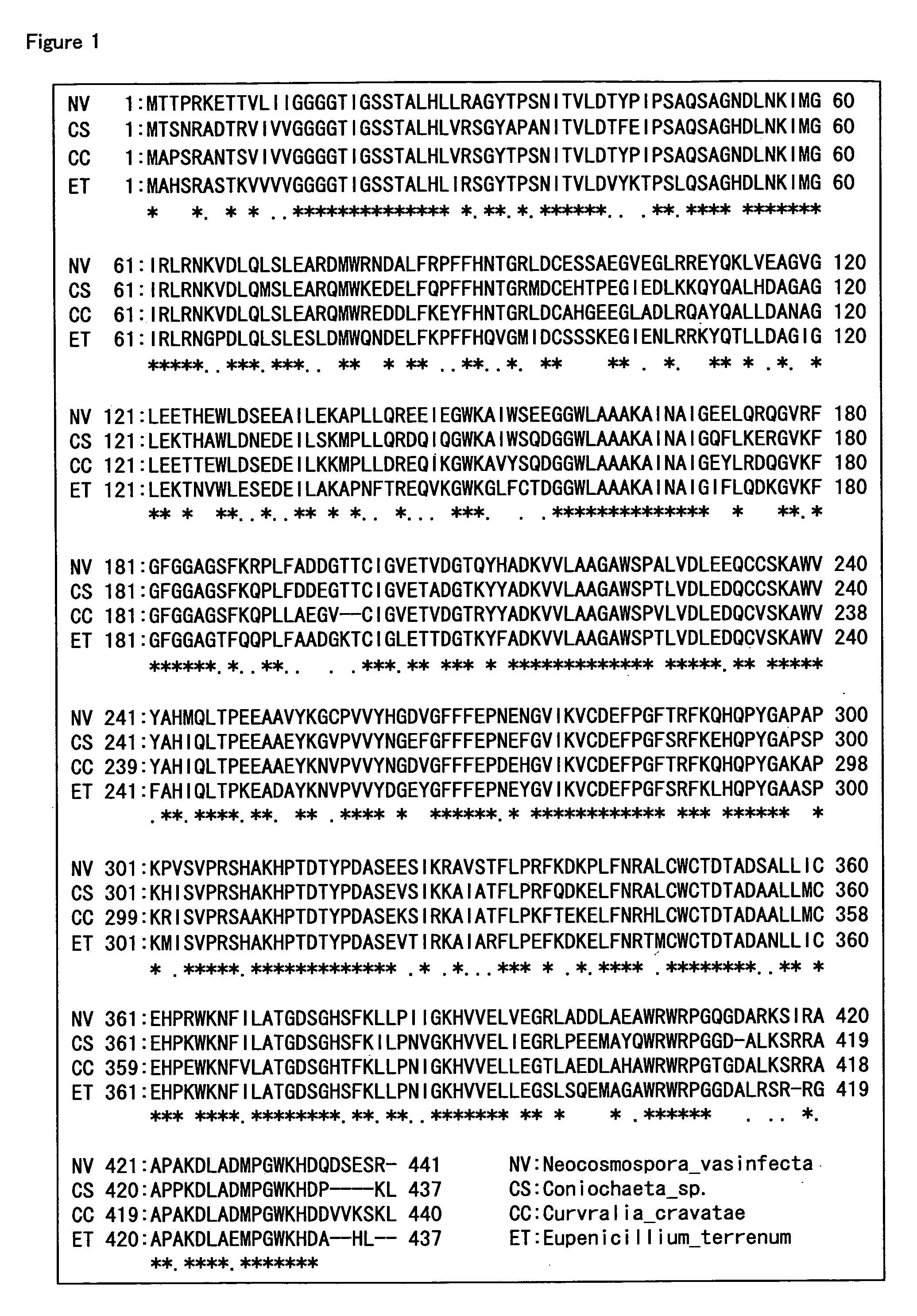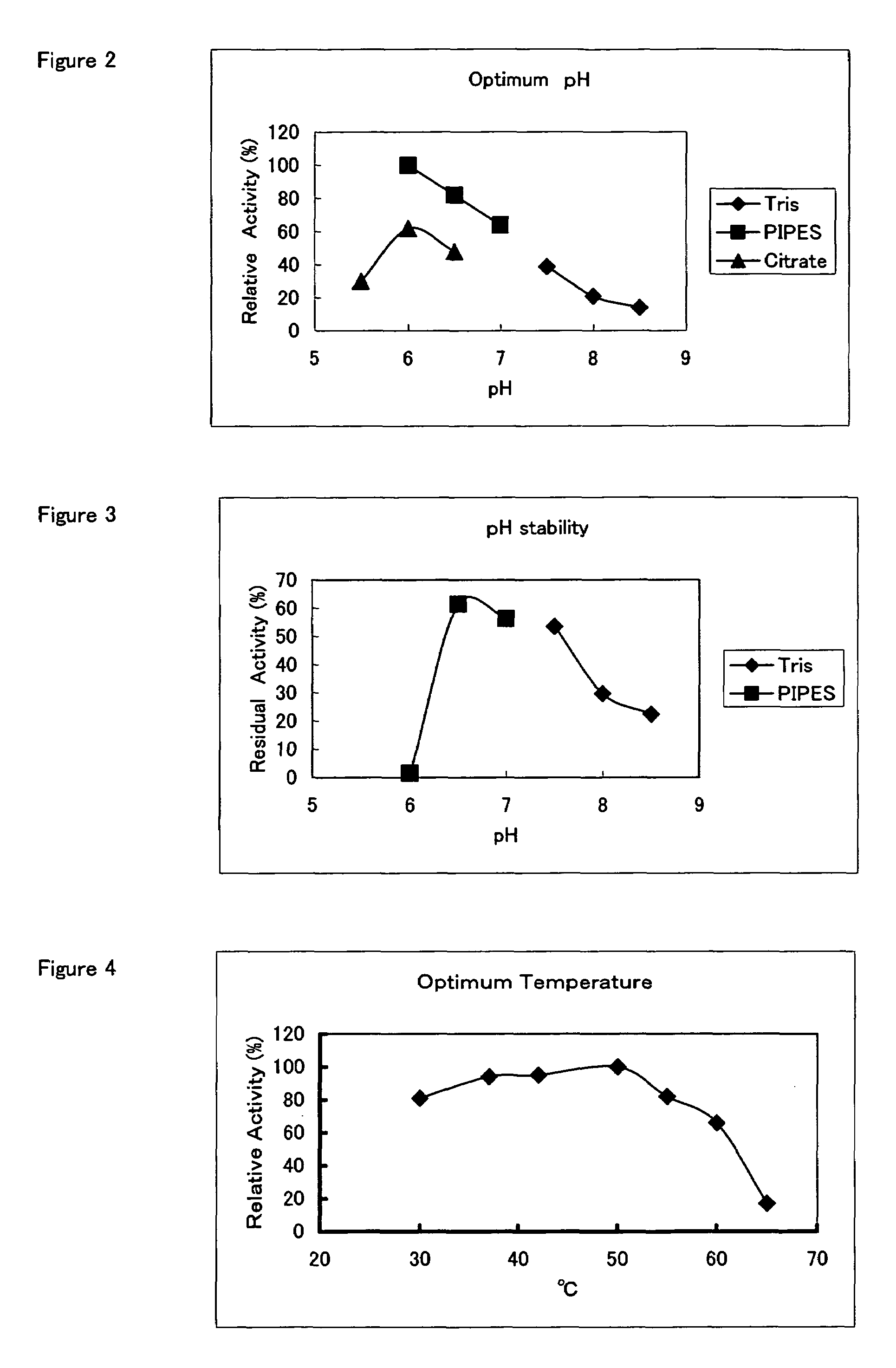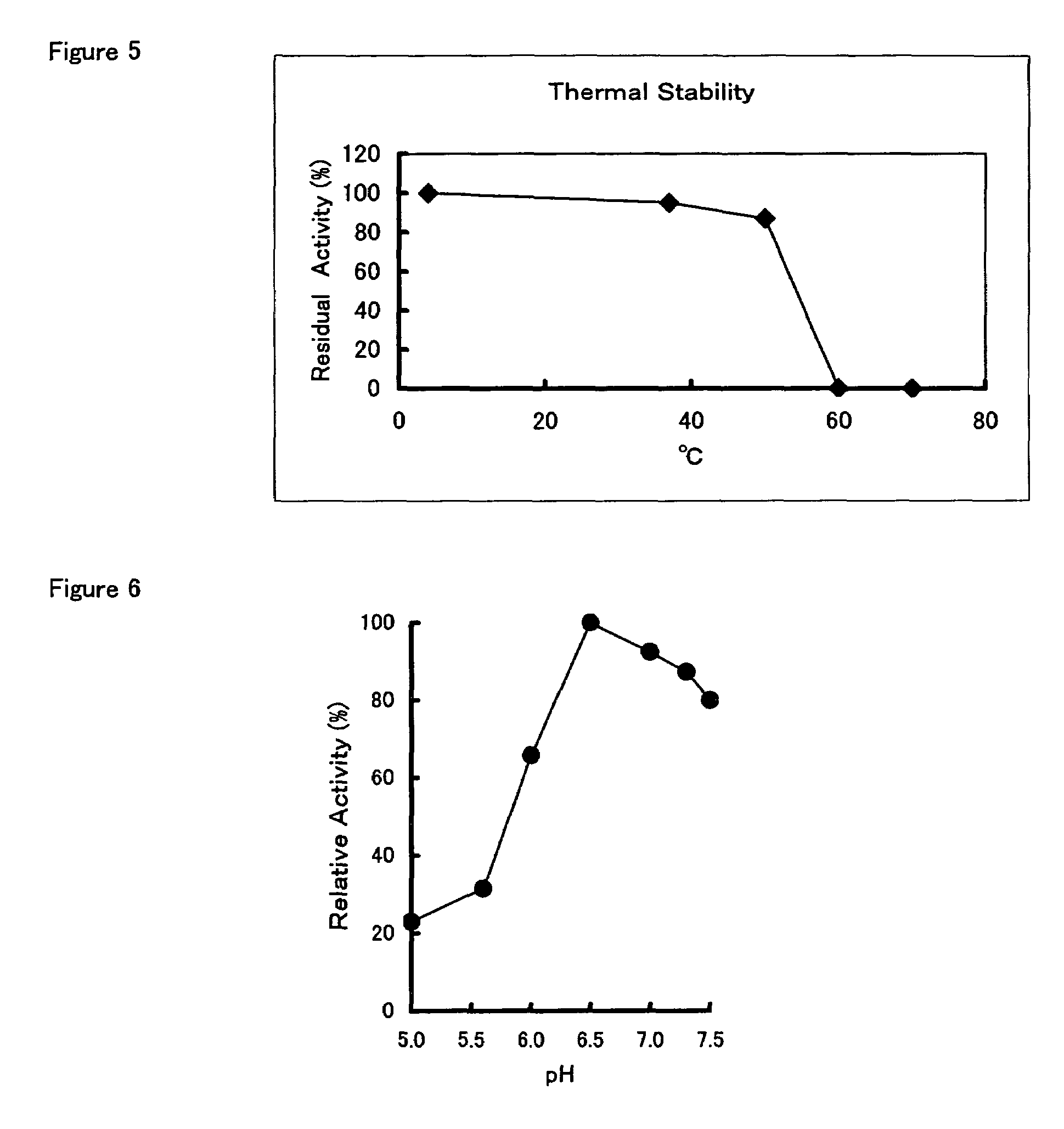Hemoglobin A1c determination method, enzyme to be used therefor, and production method thereof
a technology of hemoglobin and enzyme, applied in the field of hemoglobin a1c determination method, enzyme to be used therefor, and production method thereof, can solve the problems of low processing speed, low accuracy, and dedicated devices
- Summary
- Abstract
- Description
- Claims
- Application Information
AI Technical Summary
Benefits of technology
Problems solved by technology
Method used
Image
Examples
example 1
Screening of Protease for Hemoglobin A1c Determination (pH 7.5)
[0199]A screening method is shown in which a protease that cleaves a glycated peptide from N-terminal-glycated pentapeptide of a hemoglobin β-chain without substantially cleaving a glycated amino acid or glycated peptide from N-terminal-glycated pentapeptide of a hemoglobin α-chain. Each 10 μl of a sample for screening was placed in 3 wells of a 96-well plate, respectively. Then, the first well was supplemented with 50 μl of an α-solution, the second well was supplemented with 50 μl of a β-solution, and the third well was supplemented with 50 μl of a control solution. After the plate was incubated at 37° C. for 60 minutes, 50 μl of distilled water and 50 μl of a developing solution were added, and the whole was left at room temperature for 30 minutes. Then, the absorbance at a measuring wavelength of 550 nm and a reference wavelength of 595 nm were determined using a Microplate Reader (model 550, manufactured by Bio-Rad)...
example 2
Screening of Protease for Hemoglobin A1c Determination (pH 3.5)
[0202]A screening method is shown in which a protease that cleaves a glycated peptide from N-terminal-glycated pentapeptide of a hemoglobin β-chain without substantially cleaving a glycated amino acid or glycated peptide from N-terminal-glycated pentapeptide of a hemoglobin α-chain. Each 10 μl of a sample for screening was placed in 3 wells of a 96-well plate, respectively. Then, the first well was supplemented with 50 μl of an α-solution, the second well was supplemented with 50 μl of a β-solution, and the third well was supplemented with 50 μl of a control solution. After the plate was incubated at 37° C. for 60 minutes, 50 μl of pH-regulating solution and 50 μl of a developing solution were added, and the whole was left at room temperature for 30 minutes. Then, the absorbance at a measuring wavelength of 550 nm and a reference wavelength of 595 nm were determined using a Microplate Reader (model 550, manufactured by B...
example 3
Screening of Protease for Hemoglobin A1c Determination Derived from Microorganisms
[0204]Various bacteria were cultured with shaking in Difco Lactobacilli MRS Broth (manufactured by Becton, Dickinson and Company), a MM medium (2.5% mannose, 2.5% beer yeast extract, pH7.0), and a YPG medium (2% glucose, 1% polypeptone, 2% yeast extract, 0.1% potassium dihydrogen phosphate, 0.05% magnesium sulfate heptahydrate, pH 7.0) at a temperature of from 28 to 30° C. for 1 to 7 days. Then, cells were removed by centrifugation from the culture solutions to obtain culture supernatants. A sample was prepared by diluting the obtained culture supernatants 10-fold with a 10 mM potassium phosphate buffer (pH7.5), and the determination was performed in a similar manner as Example 1. Table 7 shows the results from the bacteria cultured in MRS Broth, Table 8 shows the results from the bacterium cultured in the MM medium, and Table 9 shows the results from the bacterium cultured in the YPG medium (note that...
PUM
| Property | Measurement | Unit |
|---|---|---|
| pH | aaaaa | aaaaa |
| pH | aaaaa | aaaaa |
| pH | aaaaa | aaaaa |
Abstract
Description
Claims
Application Information
 Login to View More
Login to View More - R&D
- Intellectual Property
- Life Sciences
- Materials
- Tech Scout
- Unparalleled Data Quality
- Higher Quality Content
- 60% Fewer Hallucinations
Browse by: Latest US Patents, China's latest patents, Technical Efficacy Thesaurus, Application Domain, Technology Topic, Popular Technical Reports.
© 2025 PatSnap. All rights reserved.Legal|Privacy policy|Modern Slavery Act Transparency Statement|Sitemap|About US| Contact US: help@patsnap.com



